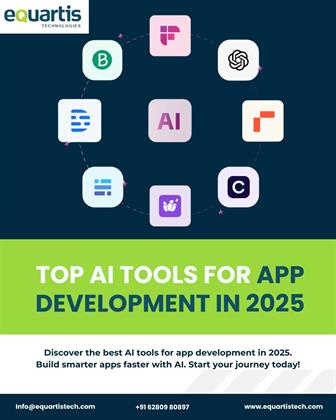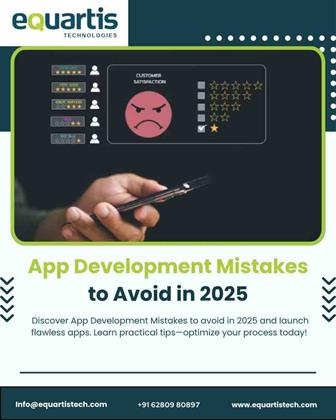
Mobile apps are more than just tools—they’re lifelines. Whether it’s shopping, banking, learning, or socializing, users expect mobile apps to be fast, intuitive, and reliable. But with millions of apps competing for attention, how do you ensure yours stands out?
The answer lies in Optimizing Mobile Apps for a better user experience. It’s not just about flashy features or sleek design—it’s about making your app functional, responsive, and delightful to use. In this blog, we’ll explore the key principles, strategies, and tools that help developers and businesses create mobile apps users love.
Introduction: Why Optimization Matters
Optimizing Mobile Apps means refining every aspect of your app—from performance and design to usability and accessibility. It’s about removing friction, reducing load times, and ensuring users can achieve their goals effortlessly.
Why It’s Crucial:
User Expectations Are High: People expect apps to work flawlessly.
Retention Depends on Experience: A poor experience leads to uninstalls.
Competition Is Fierce: Optimization gives you a competitive edge.
Better Reviews and Ratings: Happy users leave positive feedback.
What Is Mobile App Optimization?
Mobile app optimization refers to the process of improving an app’s performance, usability, and visibility. It includes technical enhancements, design improvements, and marketing strategies.
Key Areas of Optimization:
Performance: Speed, responsiveness, and stability.
Design: Intuitive navigation and appealing visuals.
User Engagement: Push notifications, personalization, and feedback loops.
App Store Optimization (ASO): Keywords, descriptions, and visuals that improve discoverability.
Whether you’re building a new app or refining an existing one, optimization is a continuous process.
Understanding User Behavior
Before you optimize, you need to understand your users. What do they want? Where do they struggle? What keeps them coming back?
Tools for Insight:
Analytics Platforms: Track user actions, drop-off points, and session duration.
Heatmaps: Visualize where users tap, scroll, or abandon.
User Feedback: Reviews, surveys, and support tickets reveal pain points.
By analyzing user behavior, you can make informed decisions that improve experience and satisfaction.
Technical Optimization Strategies
Let’s dive into the technical side of Optimizing Mobile Apps:
1. Reduce App Load Time
Compress images and assets.
Minimize API calls.
Use lazy loading for non-critical elements.
2. Improve Responsiveness
Optimize code for smooth transitions.
Avoid blocking the main thread.
Test on multiple devices and OS versions.
3. Enhance Offline Functionality
Cache data for offline access.
Provide fallback content in case of poor connectivity.
4. Battery & Data Efficiency
Limit background processes.
Optimize network usage.
Technical optimization ensures your app runs smoothly across devices and conditions.
Design Optimization: Making It Intuitive
Design plays a huge role in user experience. A well-designed app feels effortless to use.
Best Practices:
Consistent Layouts: Familiar patterns reduce the learning curve.
Clear CTAs: Buttons and links should be easily identifiable and understandable.
Minimal Clutter: Focus on essential features and content.
Accessibility: Support screen readers, high contrast modes, and larger text.
Design isn’t just about aesthetics—it’s about guiding users toward their goals.
App Development with Optimization in Mind
Optimization should start during app development, not after launch. Developers and designers must collaborate to build performance and usability into the app’s foundation.
Development Tips:
Modular Architecture: Easier to test and update components.
Code Reviews: Catch inefficiencies early.
Automated Testing: Ensure stability across updates.
Continuous Integration: Deploy improvements quickly and safely.
By integrating optimization into the development process, you save time and deliver better results.
Mobile App Development Trends That Support Optimization
Modern mobile app development is embracing tools and frameworks that make optimization easier.
Popular Trends:
Cross-Platform Development: Tools like Flutter and React Native reduce development time and ensure consistency.
AI & Machine Learning: Personalize user experience based on behavior.
Cloud Integration: Improve scalability and performance.
Microinteractions: Small animations that guide and delight users.
These trends help developers build apps that are not only functional but also engaging and future-ready.
Common Mistakes to Avoid
Even the best apps can suffer from poor optimization. Here are some pitfalls to watch out for:
Ignoring User Feedback: Users often highlight issues developers miss.
Overloading Features: Too many options can confuse users.
Neglecting Testing: Bugs and crashes hurt credibility.
Poor Onboarding: Users should understand the app quickly.
Inconsistent Updates: Regular improvements keep users engaged.
Avoiding these mistakes ensures your app stays relevant and reliable.
Measuring Success: KPIs That Matter
To know if your optimization efforts are working, track these key performance indicators:
KPI What It Tells You
Load Time Speed and responsiveness
Crash Rate Stability and reliability
Retention Rate User satisfaction and loyalty
Conversion Rate Effectiveness of CTAs and flows
App Store Rating Overall user perception
Regular monitoring helps you refine your strategy and deliver better experiences.
Conclusion: Optimization Is a Journey, Not a Destination
Optimizing Mobile Apps is not a one-time task—it’s an ongoing commitment to excellence. From technical performance to design and user engagement, every detail matters. In a competitive market like Panchkula and beyond, optimized apps stand out, retain users, and drive growth.
Whether you’re in the early stages of app development or refining a mature product, focus on usability, speed, and feedback. The result? A mobile app that users love—and keep coming back to.
Ready to take your app to the next level? Start optimizing today and unlock its full potential.
Leave a Reply
You Might Like Also

Voice UI for Apps: Creating Hands-Free Experiences

Importance of UX UI Design in Mobile App Success

Effective Digital Marketing Solutions for Panchkula

Top AI Tools for App Development in 2025













